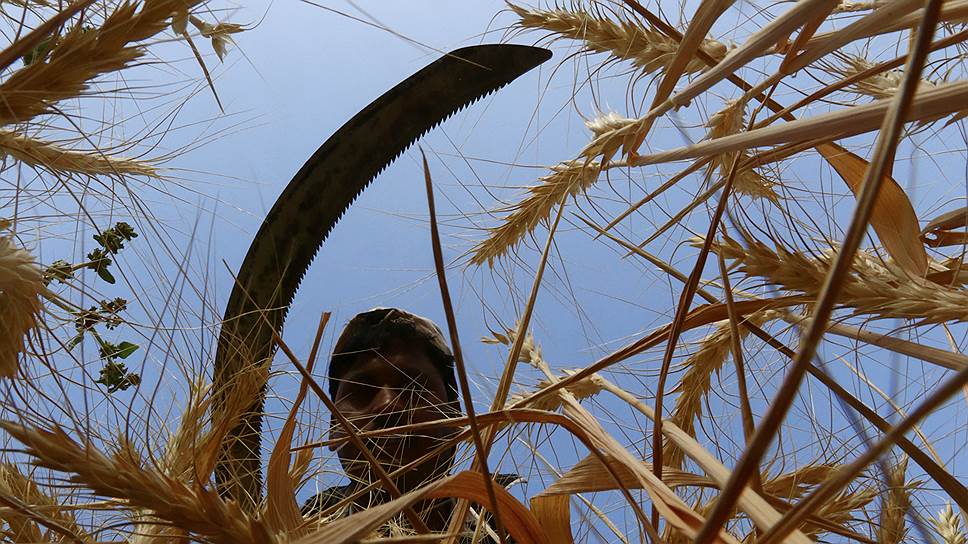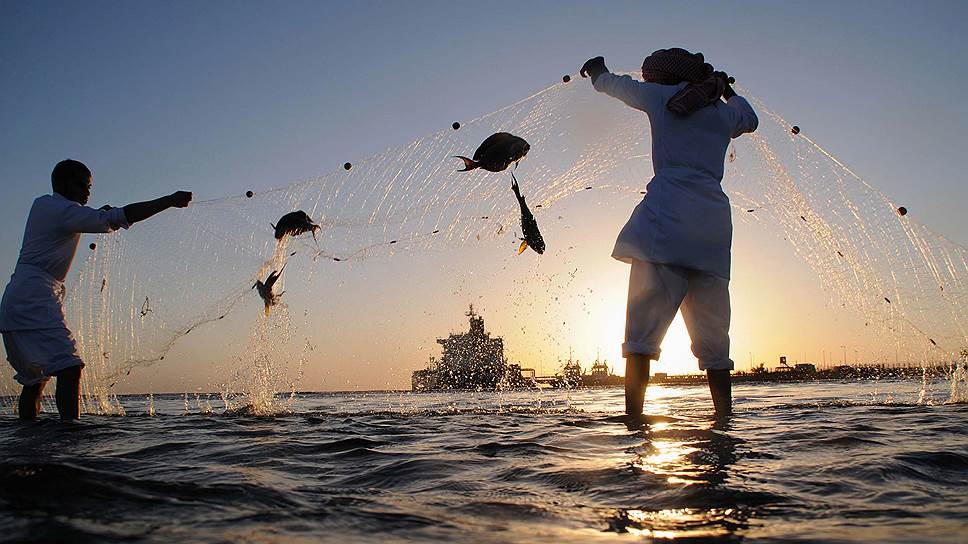As big as it gets
Two years ago, the Public Investment Fund (PIF), the sovereign wealth fund of Saudi Arabia, and the Russian Direct Investment Fund (RDIF), the sovereign fund of Russia, announced their partnership, as well as an intention to invest $10 billion in Russian projects. It was a record deal not only for the two countries, but for sovereign wealth funds globally. In May this year, Saudi Arabia signed and memorandum of understanding that it would investment in Russia's Tushino project. The announcement was made as Saudi funds and Russian companies entered into a partnership that allowed Russian businesses to enter the Saudi market. The scope of mutual investment may grow further following the transformation of the PIF, which intends to become the world's largest sovereign wealth fund.

Saudi Arabia knows how to make timely returns on its investments
Фото: AFP
According to the Sovereign Wealth Fund Institute, the total assets under the management of the world's sovereign wealth funds have reached $7.4 trillion - almost twice the amount a decade ago. Of that amount, $4.2 trillion is attributed to oil and gas exporting countries.
At the moment, the world's largest SWF is the Norwegian Pension Fund with total asset of about $1 trillion, followed by funds from the UAE, China and Kuwait. However, the PIF, whose assets are estimated at $183 billion, may take the lead as early as next year.
The PIF was established by a Royal decree in 1971 to contribute to the country's economic development. The fund's primary purpose was to provide support to commercial projects of strategic significance for the economy, which could not be supported by private investors due to insufficient financial resources or experience. The PIF invested in a number of strategic sectors of the country's economy, including oil refinery, petrochemicals, construction of pipelines and oil-storage facilities.
In March 2015, the asset management function was transferred from the Ministry of Finance to the Council of Economic and Development Affairs, which is implementing Vision 2030, Saudi Arabia's strategic development program. The new board of directors was headed by Crown Prince Mohammad bin Salman. This was when the transformation of the PIF into a global investment fund started as it began to identify investment options across the globe, including Russia.
Saudi Arabia has set an ambitious goal to reduce its reliance on oil and use PIF's returns on investments within and outside the Kingdom to finance the country's budget. The fund may become the world's largest in terms of assets if it goes ahead with an IPO of a small equity stake (presumably under 5%) of Saudi Aramco, the world's largest oil-production company, valued at over $2 trillion). The proceeds from the IPO will be placed under PIF's management, which is expected to boost the fund's capitalization to $2.5 trillion, while the share of foreign investments, according to the fund's development plan, is likely to increase from 5% to 50% by 2020. Under this scenario, the fund will control up to 10% of the global investment resources and more than 3% of global assets.
The PIF has already started to invest into Russian projects — the respective memorandum having been signed with RDIF on the sidelines of the St Petersburg International Economic Forum in June 2015. According to Kirill Dmitriev, the CEO of RDIF, the agreement was signed following the visit of Crown Prince Mohammad bin Salman to Russia and his subsequent meeting with Russian President Vladimir Putin.
The memorandum culminated in a partnership and a commitment to invest in attractive projects in Russian infrastructure and agriculture sectors. The PIF invested $10 billion as part of the partnership, the largest investment not only in the history of Russia-Saudi relations, but it was the largest investment for a sovereign wealth fund globally.
According to RDIF, a number of deals have been made in infrastructure, manufacturing, retail and logistics sectors. Currently, the two funds are reviewing more than 25 projects in infrastructure, logistics, retail, agriculture and pharmaceuticals, with a total value of more than $10 billion. Moreover, some investments in the RDIF's projects by Saudis are made automatically. In May, the PIF signed an agreement to join a consortium of investors to implement the Tushino airfield north of Moscow that envisages the construction of Rostec City, the largest class A innovative tech and business park with a total area of about 263,000 square kilometers, sport centers and roads. The total cost is estimated at $1 billion. Some of these funds will be invested by the consortium as equity. Apart from RDIF and the PIF, the consortium also includes investors from China (Silk Road Fund), as well as funds from the Middle East. Some funding will be provided by banks. The project is being implemented by Vi Holding.
"We are glad that our PIF partners are optimistic about the potential of infrastructure projects in Russia, especially in light of Saudi Arabia's new development strategy. The participation of some of the leading funds shows that even large-scale transport infrastructure projects, including public-private partnerships, are attractive for foreign institutional investors," RDIF said.
To facilitate the entry of the Russian business into the Saudi market, RDIF in June 2015 signed a partnership agreement with the Saudi Arabian General Investment Authority (SAGIA). Unlike the PIF, its primary mission is to attract foreign investments. "We plan to support Russian companies in the oil and gas sector, as well as in construction and service industries, in their entry into the Saudi market," Mr Dmitriev said.

The art of searching for business opportunities in the Gulf has been refined over the course of centuries
Фото: Reuters
SAGIA was established in 2000 by the government of Saudi Arabia to support the country's economic liberalization. The key objective of the fund was to improve the investment climate and accelerate the economy by creating favorable conditions for business and investors, as well as by investing in key sectors such as energy and transport.
According to Mr Dmitriev, RDIF is currently considering a number of potential projects in Saudi Arabia, including a partnership between Eurasia Drilling, the largest Russian oilfield service company, and Saudi Aramco to help EDC enter the Saudi market. In June 2015, RDIF announced its plans to acquire a minority stake in EDC together with the UAE's Mubadala and the Russia-China Investment Fund (RCIF, a joint fund of RDIF and the China Investment Corporation). The RDIF chief executive then admitted that the entry of RDIF and the foreign funds will help Eurasia Drilling win contracts in Gulf countries. "The purpose of our participation is to help Eurasia Drilling to expand its operations in other markets. Among other things, we are in talks with Saudi Arabia for Eurasia Drilling to provide oil services to Saudi Aramco and several other major companies in the region. The idea is simple — to invest in EDC and help it operate in the Arab markets where we are active," Mr Dmitriev explained.
In addition, RDIF and its Saudi partners are likely to establish a joint fund by the end of this year for investments in energy assets, including oilfield services companies and oil and gas equipment producers. "We are working to finalize our energy fund, which we expect to reach $1 billion, as well as other high-tech projects in the oil sector," said Mr Dmitriev. He added that establishment of such a fund might be completed by the end of this year. "The fund would be interested in projects similar to Eurasia Drilling. We are considering several such projects. These are Russian providers of oilfield services or equipment producers, which could offer their services or supply their products to Saudi Aramco", he added.
Finally, the Russian investors may also participate in the planned IPO of Saudi Aramco. As the Russian Minister of Energy, Aleksander Novak, said at the St Petersburg International Economic Forum: "Russia and Saudi Arabia will be enhancing their collaboration in various sectors, including energy, technology as well as oil exploration, production and refining. The agreement on oil production cuts will end one day, but the relationship with Saudi Arabia will continue."
A strong foundation has already been laid for new, non-oil related deals between Russia and Saudi Arabia. The first visit of the Saudi king to Russia will be possibly followed by more agreements.

